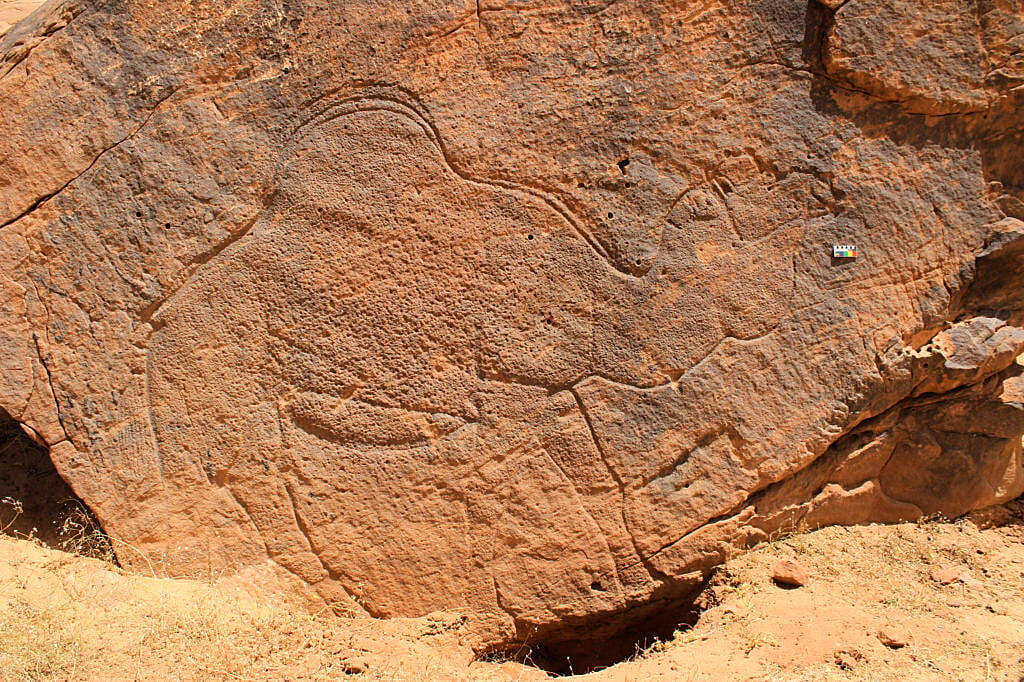12,000-year-old carvings of animals discovered in Saudi Arabian desert

Researchers have discovered life-size rock carvings of camels, gazelles, and other animals in the Saudi Arabian desert. These carvings date back to approximately 12,000 years ago, with many measuring more than 6 feet (1.8 meters) tall.
Scientists believe the carvings were created using a wedge-shaped rock to produce sharp, precise lines. Interestingly, several of the engravings were etched on narrow ledges, meaning the artists could not even step back to survey their work as they created it.
“To engrave that much detail with just a rock takes real skill,” said Maria Guagnin, an archaeologist with the Max Planck Institute of Geoanthropology in Germany, who was involved in the discovery.
The animal carvings, along with engraving tools found at the site, indicate that people were living in the area about 2,000 years earlier than previously thought. However, it remains unclear how these early inhabitants survived in such arid conditions. Researchers speculate they may have lived off shallow lakes that formed seasonally or drank water that accumulated in deep crevices.
“People have been creating rock art in Saudi Arabia for thousands of years,” Guagnin explained. But dating older engravings can be challenging since they often lack writing, and few remnants like charcoal exist to send to laboratories for analysis.
“We know relatively little about art in the Middle East during this very ancient period of the human past,” said Michael Harrower, a Johns Hopkins University archaeologist who was not involved in the research.
In this latest discovery, scientists found a rock pick buried directly beneath the carvings. This allowed them to date both the tool and the art it was used to create. Their findings were published on Tuesday in the journal *Nature Communications*.
Previously, scientists were unsure if people lived in the desert during this time period since conditions were extremely dry and water was thought to be scarce. It was believed that people only moved in later, when the landscape featured greener pastures and lakes.
One of the carvings depicts an auroch, an ancestor of wild cattle that did not inhabit the desert and later became extinct. This led Guagnin to wonder if the artists might have encountered these animals by traveling elsewhere during the dry season.
“They must have been fully established communities that knew the landscape really well,” she said.
This remarkable discovery offers new insights into early human life and art in one of the most challenging environments on Earth.
https://www.breakingnews.ie/world/12000-year-old-carvings-of-animals-discovered-in-saudi-arabian-desert-1813085.html









